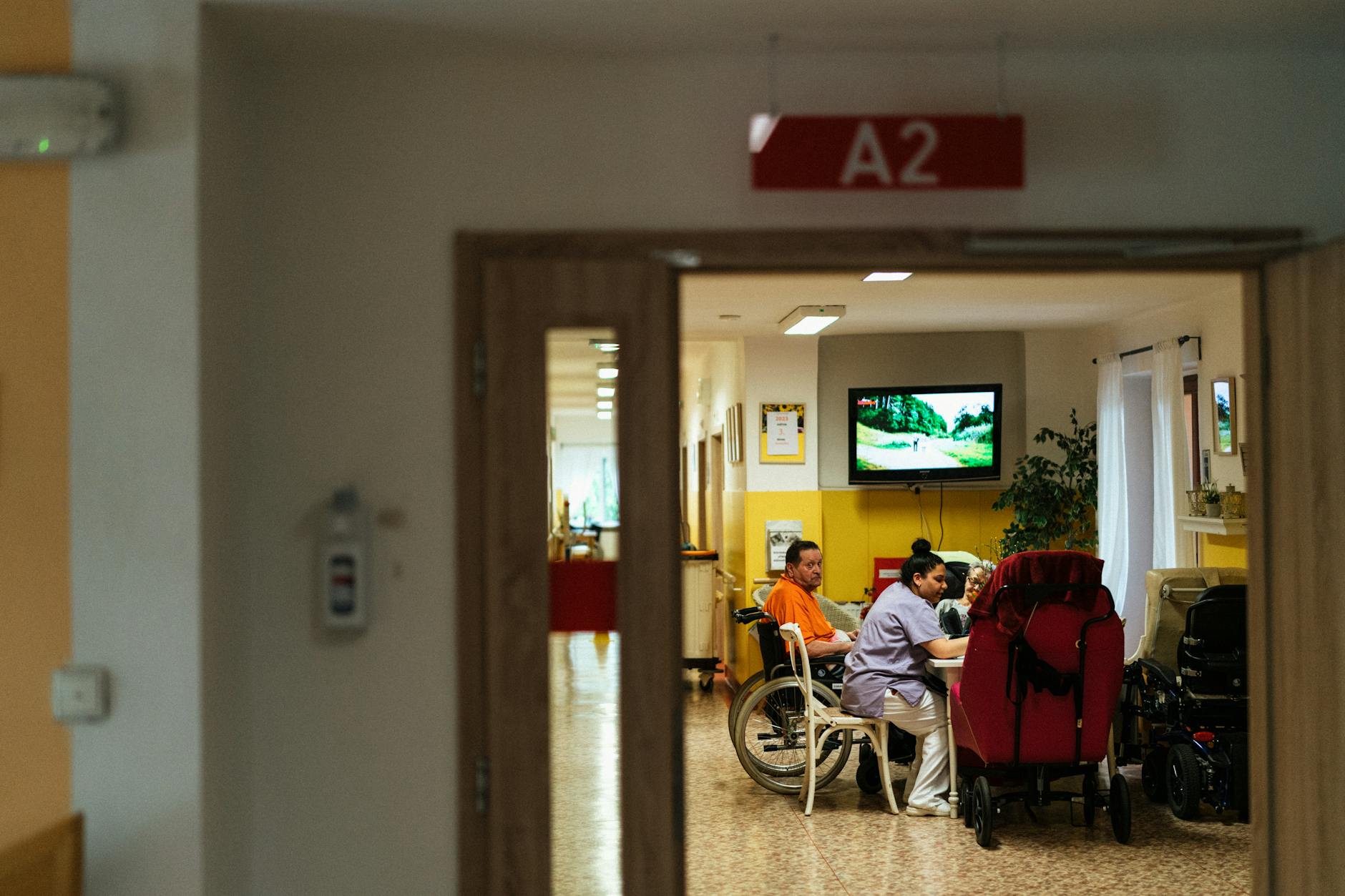Aging Population Statistics
March 5, 2025
Global Implications of the Aging Population


Understanding the Aging Population
The aging population is an increasingly important demographic phenomenon with diverse implications globally and within specific nations such as the United States. As people live longer and birth rates decline, societies are experiencing a transformative shift in population dynamics. This article explores these trends, the socioeconomic challenges they pose, and their potential impact on policy-making and future planning. Through reliable statistics and projections, we delve into the implications of a rapidly aging world, highlighting the need for adaptive strategies in healthcare, economic planning, and social support systems.
Key Facts on Global Demographic Shifts and Aging Population

- The global population aged 65 and older is projected to increase from 761 million in 2021 to 1.6 billion by 2050.
- By 2050, those aged 65+ will make up over 16% of the world's population, up from 10% in 2021.
- Key drivers of the aging population include increased life expectancy and declining birth rates.
- Older adults frequently face multiple health issues, necessitating tailored geriatric care strategies.
- Governments may experience strain on pension systems and healthcare budgets due to the rising aging population.
- In the U.S., the population aged 65+ increased to 55.8 million from 2010 to 2020, a 38.6% rise.
- By 2040, it is projected that 80 million Americans will be aged 65 or older, roughly 1 in 5 individuals.
- The old-age dependency ratio in the U.S. is expected to fall to 2.1 workers per retiree by 2040.
- Approximately 90% of older adults experience at least one chronic condition, heightening healthcare demands.
- Age discrimination obstructs older individuals' access to jobs, limiting their income potential and economic stability.
Global Demographic Shifts

What is the global trend in the aging population?
The global trend in the aging population underscores a remarkable demographic shift. The number of individuals aged 65 and older is projected to increase dramatically, escalating from 761 million in 2021 to 1.6 billion by 2050. This transformation will mean that over 16% of the world's population will belong to this age group, up from one in ten in 2021 to one in six by 2050.
Drivers of Aging Population
Two primary factors contribute to this trend: increased life expectancy and declining birth rates. Improvements in healthcare and living standards have led to longer life spans, while families are having fewer children. Consequently, nations will face significant challenges related to healthcare provisions, economic security, and adequate social support systems.
Implications for Healthcare and Economy
This demographic expansion necessitates focused attention on healthcare strategies to manage age-related ailments, including chronic diseases prevalent in older adults, such as heart disease, diabetes, and cancer. As older adults often confront multiple health issues, a tailored approach to treatment and geriatric care is essential.
Moreover, the economic implications are profound. Governments may experience heightened strain on pension systems and healthcare budgets, requiring innovative financial solutions and policy adjustments. Services must adapt to a growing demand for age-friendly infrastructures, including accessible housing and transportation.
Future Perspectives and Solutions
Innovations in technology will play a vital role in enhancing the quality of life for older adults, providing tools for communication and health monitoring. With further advancements, communities can integrate resources to support aging individuals effectively and compassionately, ensuring their dignity and well-being are central to societal progress.
| Year | Population 65+ (Million) | Percentage of Global Population |
|---|---|---|
| 2021 | 761 | 10% |
| 2050 | 1,600 | 16% |
The U.S. Aging Population

U.S. Demographic Trends
The U.S. population aged 65 and over saw remarkable growth from 2010 to 2020, with numbers climbing to 55.8 million, a 38.6% increase over just ten years. This surge marks the fastest growth rate since the 1880s, revealing a significant shift toward an aging population. In 2020, 1 in 6 Americans fell into this age group, illustrating the growing presence of older adults within society. By 2040, projections indicate that 80 million Americans will be aged 65 or older, roughly one in five individuals, further underscoring this demographic transition.
Life Expectancy
Life expectancy for older adults has also seen substantial improvements, with a 65-year-old man in 2022 expecting to live another 17.5 years, and women around 20.2 years. These advancements reflect advancements in healthcare and lifestyle, allowing older adults to enjoy longer, healthier lives. Nonetheless, with life expectancy on the rise, the health concerns of this age group are becoming more pressing; estimates suggest that 90% of seniors experience at least one chronic condition, which necessitates ample healthcare resources.
Growth Projections
Both national and global projections indicate that the elderly population will continue to swell in the coming decades. By 2050, an estimated 426 million individuals aged 80 and above worldwide will present challenges related to healthcare and social support systems. Moreover, the older demographic is anticipated to represent approximately 17% of the global population by 2050, nearly doubling the number of individuals aged 65 and older from 761 million in 2021 to 1.6 billion. This demographic shift emphasizes the urgent need for policies and infrastructure that adequately support the aging population while addressing the decline in younger populations.
| Age Group | 2020 Numbers | Projected 2050 Numbers |
|---|---|---|
| Age 65 and older | 55.8 million | 88 million |
| Age 85 and older | 6.6 million | 19 million |
| Overall U.S. Population | 331 million | 400 million (est.) |
This demographic evolution not only reshapes societal dynamics but also poses critical implications for economic structures and social services.
Aging and Economic Challenges

What are the main issues associated with an aging population?
The aging population poses several pressing economic challenges that countries must address. At the forefront is the increasing ratio of retirees to the working-age population. In the United States, for example, the old-age dependency ratio is projected to decline significantly, going from 3.7 workers per retiree in 1970 to just 2.1 workers per retiree by 2040. This shift indicates a looming strain on social support systems, particularly Social Security and Medicare, as the number of beneficiaries grows at a faster pace than the number of contributing workers.
Healthcare costs also become a paramount concern due to the escalating health needs of aging adults. As highlighted, about 90% of older adults experience one or more chronic conditions, demanding healthcare systems adapt to provide adequate services. The financial burden for both individuals and government entities is expected to increase dramatically, as illustrated by projections of nearly 80 million older adults in the U.S. by 2050.
Furthermore, older individuals often face economic hardships stemming from inadequate retirement savings. With a substantial portion of older adults living below the poverty line, due in part to reduced income from traditional employment and uncertainties surrounding social security benefits, financial security remains precarious. Rising living costs, especially in housing, exacerbate these challenges.
Lastly, age discrimination can obstruct older individuals' access to job opportunities, limiting their income potential and further complicating their ability to maintain a stable economic status. A recent assessment indicated that age discrimination impacts not only hiring practices but also retention and advancement opportunities for older workers.
Understanding these dynamics can help policymakers devise strategies to support the aging population effectively, ensuring their economic and social security.
Adapting to an Aging World
As populations around the world age, the need for comprehensive policy development and economic planning becomes more urgent. Addressing the challenges posed by increased longevity and shifting age demographics is crucial for sustaining social and healthcare systems. By embracing technological advancements and fostering inclusive policies, societies can support an aging population while maintaining economic balance and social welfare. The journey to adapt to these demographic changes will determine how effectively nations can ensure the well-being of their older citizens in the coming decades.
References
- Older Population and Aging - U.S. Census Bureau
- Ageing and health - World Health Organization (WHO)
- Ageing - the United Nations
- [PDF] world social report 2023: leaving no one behind in an ageing world
- 2020 Census: 1 in 6 People in the United States Were 65 and Over
- The US Population Is Aging | Urban Institute
- World's older population grows dramatically
- Get the Facts on Older Americans - National Council on Aging
- [PDF] 2023 Profile of Older Americans




































































.jpeg)











































































































































































































.avif)























































.jpeg)
































































.jpeg)














.jpg)









































.jpeg)









































































.avif)




.avif)

















































.avif)








































































































































































